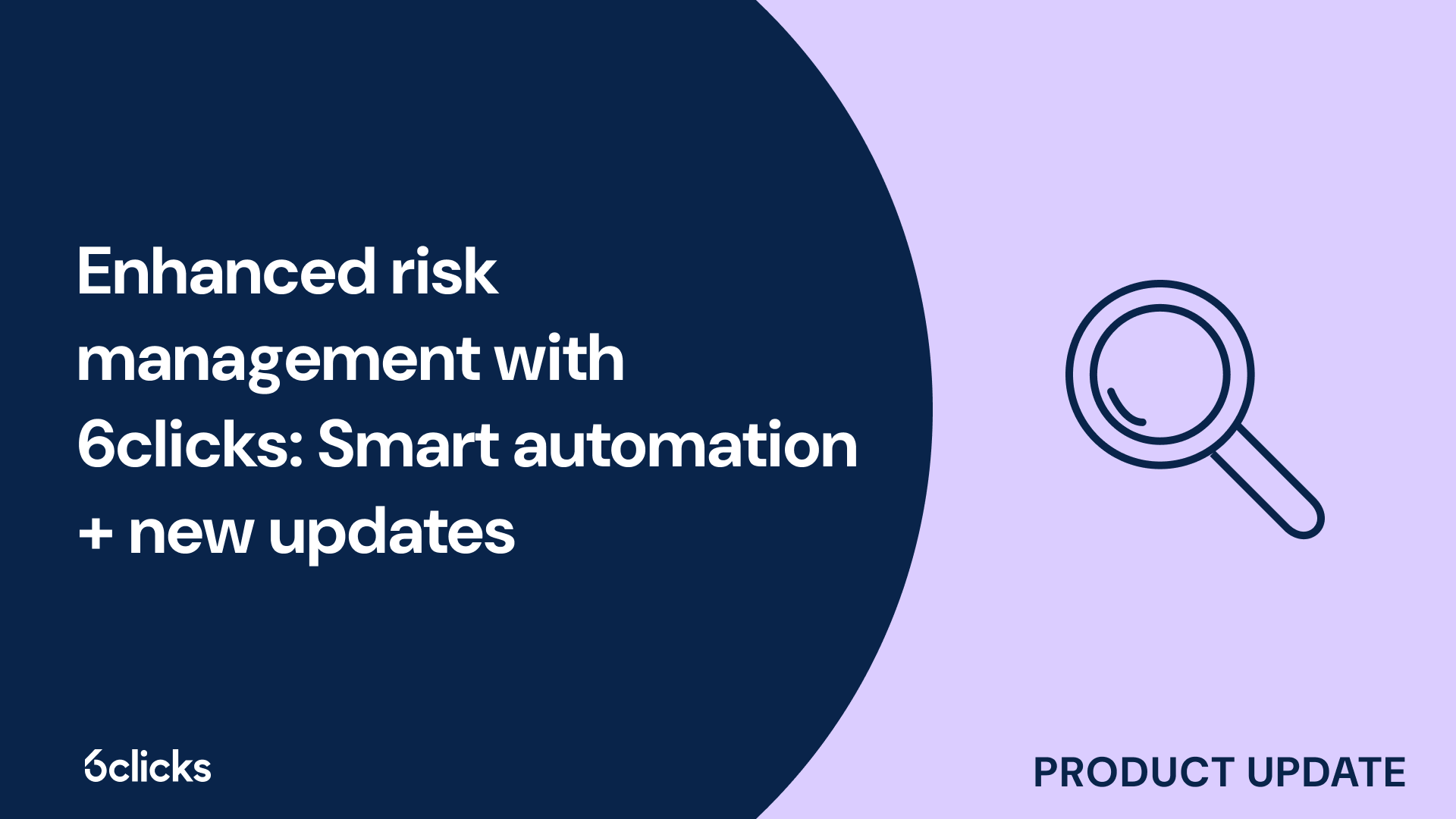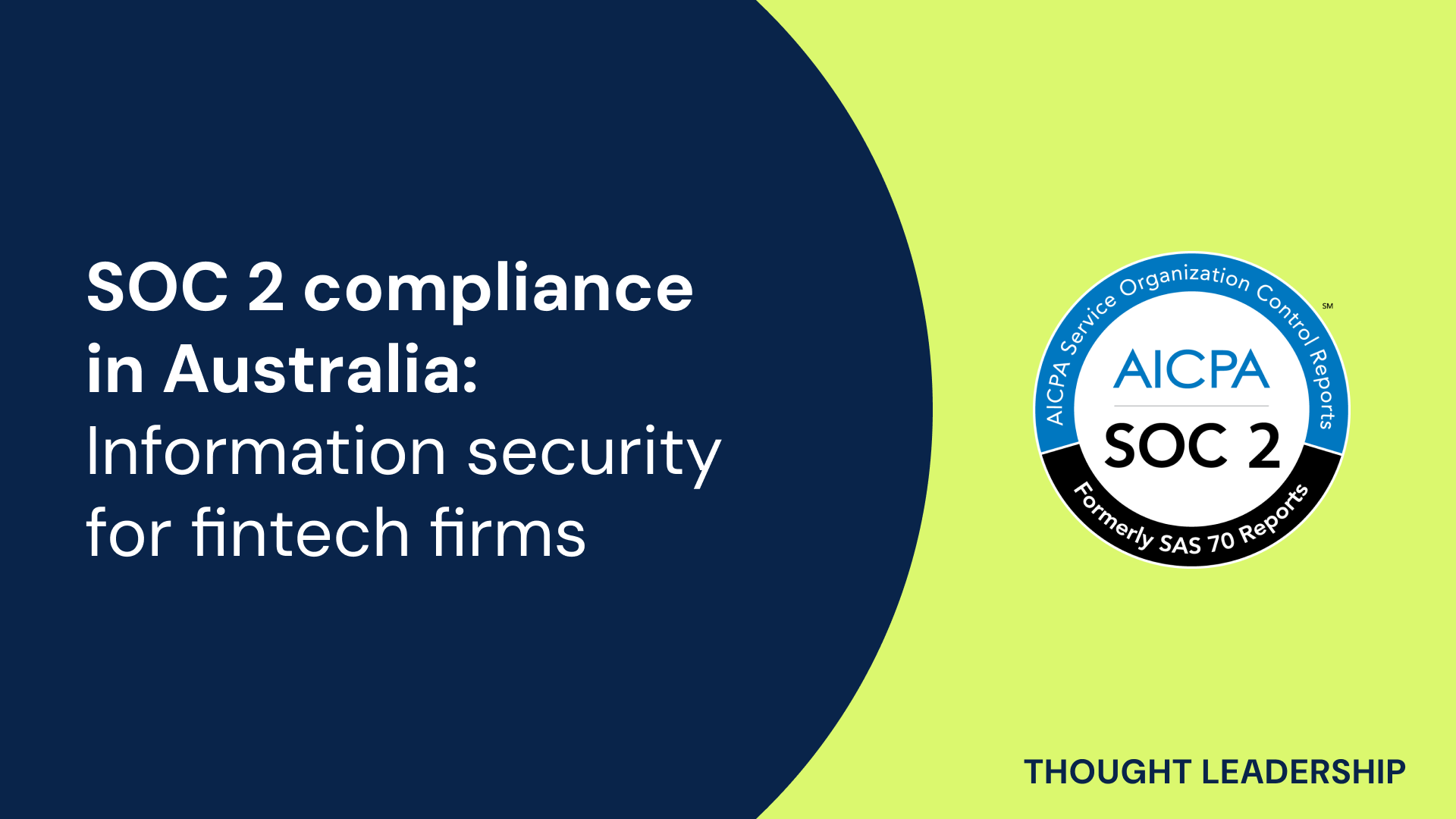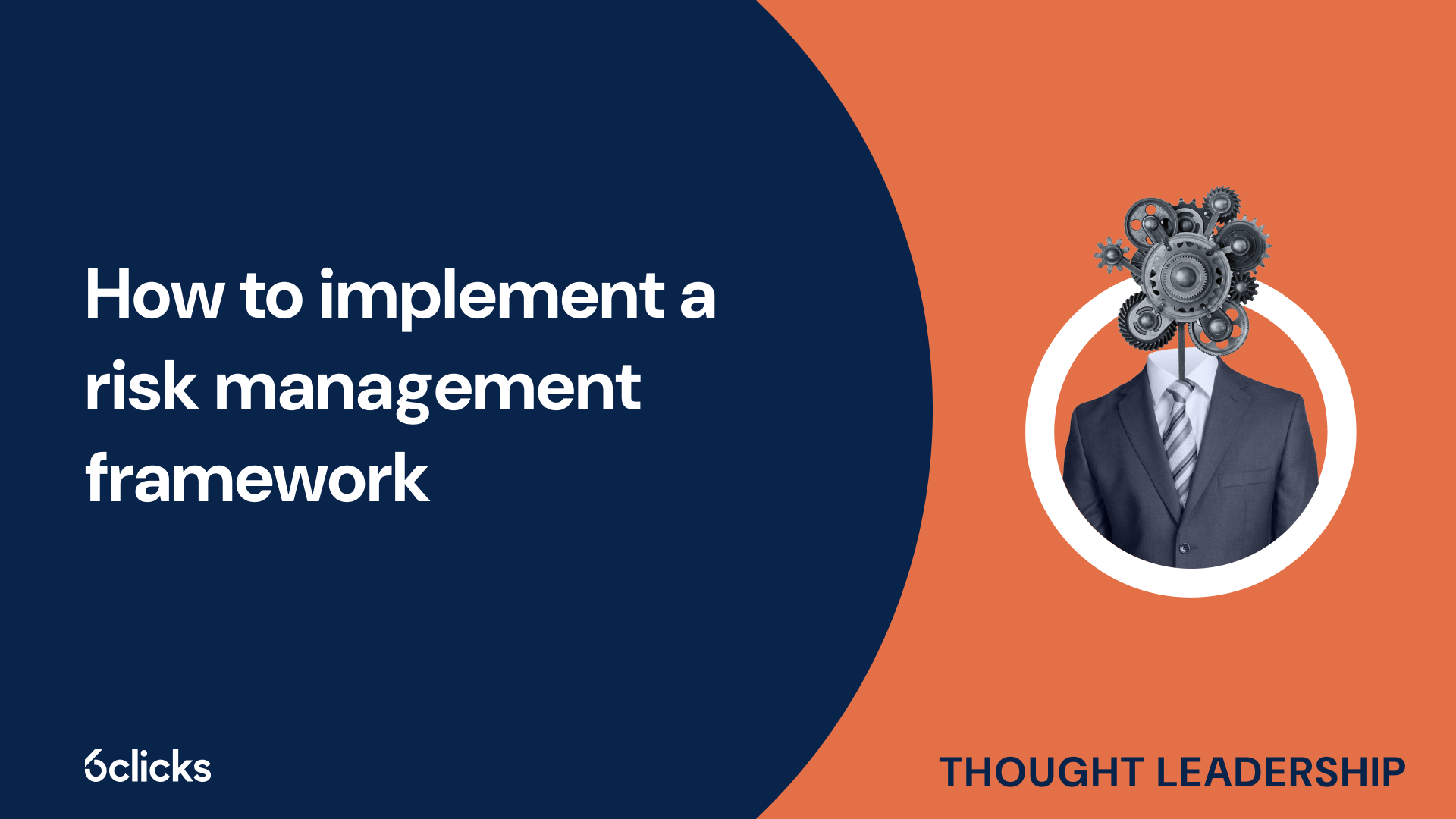The GRC buyer’s guide for 2025: Building resilience with AI-powered, federated solutions
Discover the ultimate GRC buyer's guide for 2025! Uncover how AI-powered, federated solutions transform compliance and security management for industries like government, aerospace, banking, and more. Learn about centralized control, continuous compliance, and advanced cyber GRC capabilities. Download now!
-1.png?width=200&height=249&name=Group%20193%20(1)-1.png)
The GRC buyer’s guide for 2025: Building resilience with AI-powered, federated solutions
Definition of enterprise risk
Enterprise risk refers to the potential for loss or harm that a business may face in the pursuit of its objectives. These risks can come from internal or external sources and can have a significant impact on the company's operations, reputation, finances, and overall success. Effective management of enterprise risk is crucial for businesses to navigate uncertainties and make informed decisions to mitigate or capitalize on the opportunities they present. By identifying, assessing, and managing different types of enterprise risks, organizations can develop strategies and implement measures to minimize their negative effects and maximize their potential benefits. This involves evaluating potential risks such as operational, strategic, financial, compliance, legal, reputational, credit, liquidity, security, and market risks. With a comprehensive understanding of enterprise risks, companies can better protect their employees, assets, stakeholders, and bottom line, allowing for business growth and sustainability.
Types of enterprise risk
Enterprise risk refers to the potential risks and uncertainties faced by an organization in its day-to-day operations. These risks encompass various categories that fall under enterprise risk management (ERM). By understanding and managing these risks, businesses can protect themselves and make informed decisions to achieve their objectives.
- Operational Risks: These risks arise from internal factors such as people, processes, systems, and external events. They include risks related to technology, supply chain, human resources, and day-to-day operations.
- Strategic Risks: Strategic risks emerge from factors affecting a company's business strategies and long-term plans. These risks may arise from market changes, competition, and the failure to adapt to evolving trends and customer needs.
- Financial Risks: Financial risks involve uncertainties related to a company's financial position, such as fluctuations in cash flows, liquidity risk, credit risk, and inadequate capital reserves. These risks can impact a company's ability to meet financial obligations.
- Compliance Risks: Compliance risks arise from failing to adhere to laws, regulations, or industry standards. These risks can result in legal consequences, fines, reputational damage, or loss of business licenses.
- Reputational Risks: Reputational risks stem from damage to a company's image or brand. These risks can arise from negative publicity, product recalls, ethical misconduct, or customer dissatisfaction, impacting stakeholder trust and future business opportunities.
While these are some common types of enterprise risks, it is important to note that each organization may face a unique set of risks based on their industry, size, and business strategies. Implementing an effective enterprise risk management framework helps businesses identify, assess, and mitigate risks to protect their interests and achieve their goals.
Operational risks
Operational risks are a crucial aspect of enterprise risk management (ERM) and encompass various internal and external factors that can impact an organization's day-to-day operations. These risks can arise from processes, systems, technology, supply chain, and human resources. Operational risks can include disruptions to production or service delivery, IT failures or cybersecurity breaches, and employee errors or negligence. By identifying and managing operational risks, businesses can minimize the likelihood and impact of these events, ensuring smooth operations and the achievement of organizational objectives. Furthermore, the implementation of effective risk management processes and controls can help companies adapt to changing market conditions and enhance their overall performance and resilience.
Definition of operational risk
Operational risk is a crucial aspect of any business as it pertains to the potential risks and uncertainties that arise from daily business operations. It refers to the risk of loss resulting from inadequate or failed internal systems, processes, or external factors. These risks can have a significant impact on a company's financial performance, reputation, and overall success.
There are various types of risks that fall under operational risk. One such example is employee errors, which can lead to costly mistakes and financial losses. These errors may occur due to lack of training, carelessness, or even deliberate actions. Another type of operational risk is damage to assets, such as equipment, infrastructure, or inventory. Natural disasters, accidents, or negligence can result in significant financial setbacks for a business.
External fraud is also an operational risk that can cause substantial damage. This includes instances of theft, cyber-attacks, or fraudulent activities committed by external parties. With the increasing reliance on technology and digital platforms, the risk of external fraud has become a significant concern for businesses of all sizes.
Understanding and managing operational risks is essential for an organization's long-term sustainability. By implementing effective risk management strategies, businesses can identify, assess, and mitigate these risks, ultimately minimizing potential negative impacts. By continuously evaluating and improving internal controls, employee training programs, and security measures, companies can strengthen their ability to respond to operational risks effectively.
Examples of operational risks
Operational risks can greatly impact the day-to-day operations of a company, leading to potential losses. One example of operational risk is disruptions in product development. Delays in product launches or issues with quality control can not only result in financial losses but also damage a company's reputation. These disruptions can stem from various factors, such as inadequate resources, technical challenges, or unexpected regulatory changes.
Changes in business cycles also pose operational risks. For instance, if a company heavily relies on seasonal demand, a sudden decline in sales during off-peak periods can strain its financial resources and profitability. Likewise, rapid growth in demand can create operational challenges, such as capacity constraints or the need to quickly scale up production and distribution capabilities.
Operational risks can also arise from changes in operational leadership. If key personnel responsible for daily operations leave the company or experience unexpected interruptions, it can disrupt processes and decision-making. The lack of experienced leadership can lead to inefficiencies, loss of productivity, and increased costs.
It is crucial for businesses to identify and mitigate these operational risks through proactive risk management. Regular risk assessments, effective contingency planning, and robust operational controls help companies minimize the potential impact of these risks and ensure smoother day-to-day operations. By doing so, companies can safeguard their financial stability, maintain customer satisfaction, and mitigate potential losses associated with operational risk.
Mitigation strategies for operational risk
Mitigation strategies play a crucial role in managing and minimizing operational risks within organizations. Adopting effective strategies can help mitigate the potential negative impacts of operational risks and ensure business continuity.
One strategy to mitigate operational risk is to diversify the supplier base. By having multiple suppliers for critical materials or components, a company can reduce the dependency on a single supplier. This helps mitigate the risk of disruptions in the supply chain caused by factors such as supplier bankruptcy, natural disasters, or geopolitical issues. For example, a manufacturing company that relies heavily on a single supplier for a key component can face significant operational challenges if that supplier suddenly becomes unavailable. By diversifying their supplier base, the company can minimize the risk and ensure a consistent supply of materials.
Another effective strategy is to establish backup systems and redundancies. Implementing redundant systems, such as backup power sources, can help minimize the impact of disruptions caused by power outages or equipment failures. For example, a data center can have backup generators to ensure uninterrupted power supply in case of a power outage. This strategy ensures that critical operations continue without disruption, preventing potential financial losses and reputational damage.
Organizations can also develop plans and procedures by identifying critical functions, processes, and systems. Conducting a thorough assessment of the operational landscape can help identify the most critical aspects of the business. For example, a financial institution may identify transaction processing, data security, and customer service as critical functions. By understanding the criticality of these functions, the organization can develop specific risk management plans and procedures to address and mitigate potential operational risks associated with them.
Utilizing risk management software like RiskWare is crucial in identifying and improving risk management plans. This software helps organizations in identifying, assessing, and monitoring operational risks by providing comprehensive risk registers, risk assessment tools, and risk management frameworks. It allows companies to track and manage risks efficiently, enabling proactive decision-making. By leveraging risk management software, organizations can enhance their risk management capabilities and ensure a systematic approach to mitigating operational risks.
Strategic risks
Strategic risks refer to the potential threats or uncertainties that an organization faces in relation to its long-term goals and business strategies. These risks are inherent in the decisions made by senior management and business leaders, as they shape the direction and future of the company. Strategic risks can arise from changes in market conditions, technological advancements, shifts in consumer preferences, competitive pressures, and regulatory changes, among others. It is essential for organizations to identify and assess these risks to effectively manage them and ensure the successful implementation of their strategic plans. By understanding and mitigating strategic risks, businesses can enhance their ability to adapt to external challenges, maximize opportunities, and achieve their desired outcomes.
Definition of strategic risk
Strategic risk is a crucial aspect of enterprise risk management that refers to external causes or circumstances that can potentially alter the strategic direction of a business, ultimately impacting its future success. This type of risk arises from factors outside the organization's control and is often characterized by unpredictable events or changes in the business environment.
One key source of strategic risk is competition. Competitors within the industry can disrupt the market by launching new products or services, offering better pricing, or employing more effective marketing strategies. Failure to effectively respond to these competitive pressures can lead to a loss of market share, reduced profitability, and diminished long-term growth prospects.
Another source of strategic risk arises from changes in the market or industry. Market disruptions such as changes in consumer preferences, technological advancements, or regulatory shifts can significantly impact a business's strategy and its ability to stay relevant and competitive. Failure to adapt to these market dynamics can result in the loss of market position and missed business opportunities.
Additionally, strategic risk can arise from a failure to follow a well-defined business strategy. A lack of clear goals, ineffective resource allocation, or poor execution of business strategies can expose an organization to strategic risk. In such cases, the business may struggle to achieve its objectives or fail to seize opportunities necessary for long-term success.
To mitigate strategic risk, business leaders need to proactively identify potential risks, monitor the external environment, and develop flexible strategies that can adapt to changing circumstances. Implementing effective risk management processes and fostering a risk-aware culture within the organization can help in recognizing and addressing strategic risks in a timely manner, thus safeguarding the business's future success.
Examples of strategic risks
Strategic risks can have significant implications for a company's future plans and strategic direction. One example of a strategic risk is the loss of a strategy to a competitor. When a competitor develops and implements a superior strategy, it can erode a company's market share and competitive advantage. This can lead to decreased revenue, lower profitability, and a loss of customer loyalty.
Another example is being undercut in pricing. If a competitor offers products or services at a significantly lower price, it can undermine a company's pricing strategy and position in the market. This can result in reduced sales and market share, as customers may be enticed by the competitor's lower prices.
Furthermore, market disruption by competitors can pose a strategic risk. Competitors may introduce innovative products or services, embrace new technologies, or leverage changing consumer preferences. This can disrupt the existing market dynamics and render a company's current strategy obsolete. Failure to adapt to these changes may lead to a loss of relevance, decreased market share, and missed business opportunities.
Mitigation strategies for strategic risk
Mitigation strategies for strategic risk are crucial for organizations to proactively address and minimize the impact of potential risks to their business strategies. By implementing these strategies, companies can stay ahead of market disruptions and adapt effectively to changing circumstances.
One effective mitigation strategy is diversifying product or service offerings. This approach allows organizations to reduce their reliance on a single product or service, thereby spreading the risk across multiple offerings. By expanding their portfolio, companies can cater to a wider range of customer needs and respond to shifts in market demand more effectively.
Regular market research is another important mitigation strategy. By staying updated on industry trends, consumer preferences, and competitor strategies, organizations can anticipate potential disruptions and make informed decisions. Market research provides valuable insights that can inform adjustments to the business strategy, helping companies remain competitive and agile in the face of changing market dynamics.
Collaborating with industry partners is also a powerful risk mitigation strategy. By forming strategic alliances or partnerships, companies can leverage complementary strengths and resources, share knowledge and expertise, and capitalize on new business opportunities. This collaborative approach can provide access to new markets, technologies, and customer segments, reducing the risk of being left behind by competitors.
Implementing contingency plans is essential to mitigate strategic risk. Having backup plans in place allows organizations to prepare for unexpected events or changes that could potentially derail their original strategy. Contingency plans outline alternative courses of action, helping companies adapt quickly to unforeseen circumstances and mitigate potential losses.
Regularly reviewing and updating the business strategy is a vital mitigation strategy. As the business environment evolves, organizations need to assess the effectiveness and relevance of their current strategy. By regularly reviewing and updating their strategies, companies can proactively identify potential risks and make necessary adjustments to ensure long-term success.
Financial risks
Financial risks refers to the potential threats that a company may face related to its financial activities and operations. These risks can have a significant impact on the overall financial health and stability of the organization. Financial risks can arise from various sources, such as market volatility, economic downturns, liquidity issues, credit defaults, currency fluctuations, and inadequate cash flow management. It is crucial for businesses to identify, assess, and manage these risks effectively to protect their assets, meet financial obligations, and ensure sustainable growth. Implementing robust risk management strategies, monitoring key financial indicators, and diversifying investment portfolios are some of the ways companies can mitigate financial risks and safeguard their financial well-being.
Definition of financial risk
Financial risk refers to the potential loss a company may face due to inadequate monetary resources or poor cash flow management. It plays a crucial role in enterprise risk management as it can significantly impact a company's financial stability and growth prospects.
Financial risk is associated with a company's monetary resources and cash flow, making it a fundamental aspect of risk management. If a company fails to effectively manage its financial risks, it may face severe consequences such as bankruptcy or insolvency.
There are several types of financial risks that companies should be aware of. One example is credit risk, which arises from the possibility of customers defaulting on their payment obligations. To mitigate this risk, companies employ measures such as credit checks and collateral requirements.
Refinancing risk is another example of financial risk, referring to the potential difficulty a company may encounter when renewing or obtaining new financing arrangements. A company's inability to secure refinancing options can adversely affect its operations and growth plans.
Revenue risk is the risk associated with fluctuations in a company's income or sales. Factors such as market demand, competition, or changes in consumer preferences can disrupt a company's revenue streams, leading to financial instability.
Lastly, exchange rate risk relates to the potential impact of currency rate fluctuations on a company's financial performance. Companies engaged in international trade face this risk, as currency exchange rates can drastically affect the cost of imports and exports.
Managing financial risk is vital for companies to ensure their long-term profitability and organizational sustainability. By identifying and addressing these risks, companies can make informed decisions, develop effective risk management strategies, and safeguard their financial health.
Examples of financial risks
Financial risks can significantly impact the overall financial health of organizations. These risks can arise from various sources and have the potential to disrupt cash flow, impair profitability, and jeopardize the stability of a company.
One example of a financial risk is market risk, which refers to the potential for losses due to changes in market conditions or fluctuations in asset prices. This risk affects organizations that hold investments in stocks, bonds, or other securities. If the value of these investments declines, it can lead to financial losses for the company.
Another financial risk is credit risk, which arises from the possibility of customers or counterparties defaulting on their payment obligations. This risk can negatively impact a company's cash flow and profitability, especially if a significant amount of revenue depends on a few key customers.
Operational risk is yet another example of a financial risk that organizations may face. This risk relates to the potential for losses resulting from inadequate or failed internal processes, systems, or human error. Operational risks can lead to financial losses through increased expenses, reduced productivity, or reputational damage.
Foreign exchange risk is also a significant financial risk for organizations engaged in international trade. This risk arises from fluctuations in currency exchange rates, which can impact the cost of imports or exports, affecting profitability and cash flow.
Mitigation strategies for financial risk
Mitigation strategies for financial risk are crucial for organizations to protect themselves against potential financial losses and ensure sound financial management. Here are some effective methods to address and manage financial risks:
- Risk assessment: Conduct a thorough analysis of potential financial risks by identifying and evaluating all possible hazards. This will help prioritize risks and allocate resources accordingly.
- Diversification: Spread investments across different asset classes and geographical areas to minimize exposure to any single investment. This strategy reduces the impact of market volatility and provides a buffer against potential losses.
- Cash flow management: Maintain sufficient liquidity and cash reserves to meet financial obligations in case of unforeseen circumstances or cash flow disruptions. This includes optimizing working capital, managing debt, and monitoring payment terms with vendors and customers.
- Risk transfer: Transfer financial risks to external parties through insurance, derivatives, or contracts. This helps mitigate losses by shifting the responsibility to a third party better equipped to manage the risk.
- Scenario planning: Develop plans and strategies to address potential financial risks based on different scenarios. This allows organizations to prepare for and respond effectively to various outcomes and minimize exposure to unexpected events.
By implementing these mitigation strategies, organizations can prevent or minimize financial losses. Effective risk management strategies assist in identifying, evaluating, and addressing potential risks, ultimately safeguarding the organization's financial stability and ensuring long-term viability.
There are several types of enterprise risk that organizations need to be aware of and manage effectively. These risks can have a significant impact on the success and stability of a business. Let's explore some of the main types of enterprise risk, their definitions, examples, and mitigation strategies:
- Operational Risk: This refers to risks arising from internal operational processes, systems, and people. Examples include technological failures, supply chain disruptions, and human errors. To mitigate operational risks, organizations can implement strong internal controls, regularly train employees, and conduct risk assessments.
- Financial Risk: Financial risks are associated with fluctuations in financial markets and can affect a company's profitability and cash flow. Examples include liquidity risk, credit risk, and market risk. To manage financial risks, organizations can diversify investments, maintain sufficient cash reserves, and implement risk transfer strategies like insurance.
- Compliance Risk: This type of risk refers to the potential for non-compliance with laws, regulations, and industry standards. Examples include data privacy breaches and violations of labor laws. To mitigate compliance risks, organizations should establish robust compliance programs, regularly audit processes, and implement effective internal controls.
- Reputational Risk: Reputational risks arise when the public's perception of a company is negatively affected due to actions, events, or poor business practices. Examples include product recalls and negative media coverage. To manage reputational risks, organizations should prioritize customer satisfaction, monitor online presence, and respond promptly and transparently to crises.
- Strategic Risk: Strategic risks are related to the development and execution of business strategies. Examples include entering new markets, product innovation, and mergers and acquisitions. To mitigate strategic risks, organizations should conduct comprehensive market research, develop contingency plans, and regularly reassess and adjust strategies.
By understanding and effectively managing these types of enterprise risks, organizations can enhance their resilience, protect their reputation, and improve their long-term success.








